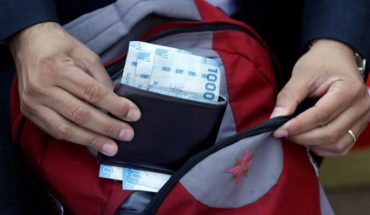
Even when Internet access is so necessary, the digital divide in our country is a latent reality. There are 23 communes that are maintained with alarming numbers of connectivity, many of them, in rural areas. What’s the impact of this?
According to the Subtel, chile still has a huge digital divide in Internet connectivity in the country. Although fiber optic connection figures doubled this year, there are still places that present a worrying reality, when Internet access has become an indispensable tool today; work, education and access to paperwork that cannot be left behind.
X-ray shows that 23 communes in the country have critical access, showing very low levels of connectivity, especially in areas far from regional capitals and large cities. On the other hand, the deployment of fixed Internet is concentrated in the main metropolitan areas of the country.
With this scenario in perspective and with an initiative led by the Con@cción program of the Ibero-American Observatory of Digital Communications, OCD, in collaboration with Adolfo Ibáñez University, the University of Santiago, Entel and Google, the Subtel will sponsor the first communal ranking of digital vulnerability in Chile; the Social Broadband Barometer, which will measure the level of access and digital capacity of broadband infrastructure in the country’s communes, to establish a digital technological vulnerability index in these territories, reflecting their greater or lesser state of development available.
“Digital infrastructure is a basic necessity, but the most important thing is to evaluate human capabilities. To take into the skills and barriers of households and small trade in the most vulnerable sectors, in order to integrate into the digital age. There is a high risk of social exclusion with technological transformation and it is essential to thoroughly study this phenomenon in order to build public policies of digital inclusion that put people at the center,” says the Director of Linking the Observatory and Con@cción, Pablo Cereceda.
“Today more than ever connectivity is a means for people’s development, so that they have greater access, better job opportunities, education, undertake and even carry out the most routine actions, such as doing paperwork and interacting with friends and family, so we consider it essential that there are such partnerships to work and join forces to reduce the digital divide and deliver tools that contribute to the quality of life,” commented Entel’s regulatory and corporate affairs manager Manuel Araya.
With the result it will be possible to rank the communes studied by their relative level of digital technological vulnerability and classify them by level of risk.
“The Society is now facing dizzying changes and we believe it is a fundamental condition for achieving the fulfilment of the UN Sustainable Development Goals, making decisive progress in digital inclusion. For this reason, we are excited and committed to being an active part of this initiative, in which we will put our talent and DNA completely”, says Arturo Alba, Academic of the Faculty of Engineering and Sciences of Adolfo Ibáñez University.
“The Human Behavior Science Area of the Citiaps Innovation Center has experiences in using technologies to collect information and interpret data, thinking about solution strategies that are unique and adaptable to each of the territories,” says Carolina Bonacic, Director of Innovation at Citiaps, University of Santiago.
The Social Broadband Barometer will also look into the most important factors that affect lack of access to connectivity and how it represents one more gap in our reality as a society.
“During these complex times technology has been key to supporting those who have had to reinvent themselves and will be equally relevant to supporting recovery. Today, more than ever, we are made clear of the value of access to technology, tools and information and it is equally essential to bring that value closer to all sectors of our country,” emphasizes Alejandra Bonati, communications manager at Google Chile.
“We are promoting a number of initiatives to improve the connectivity of all the inhabitants of Chile, mainly those living in areas where the muc commercial offersometimes it doesn’t come. In this sense we promote the projects Fibra Óptica Nacional (FON), Fibra Óptica Austral (FOA) and last mile projects that seek to connect these territories”, declares the Undersecretary of Communications, Pamela Gidi.





